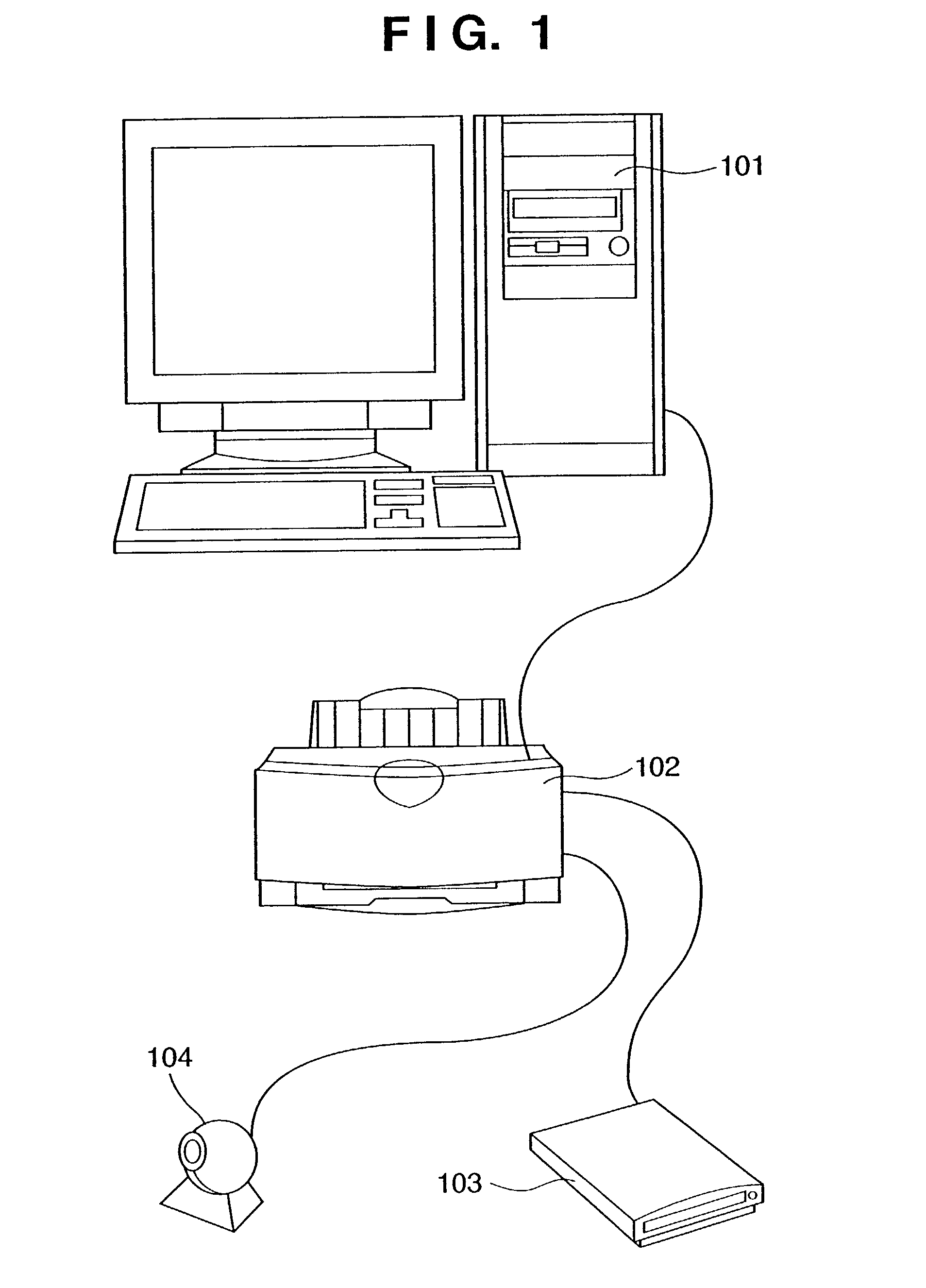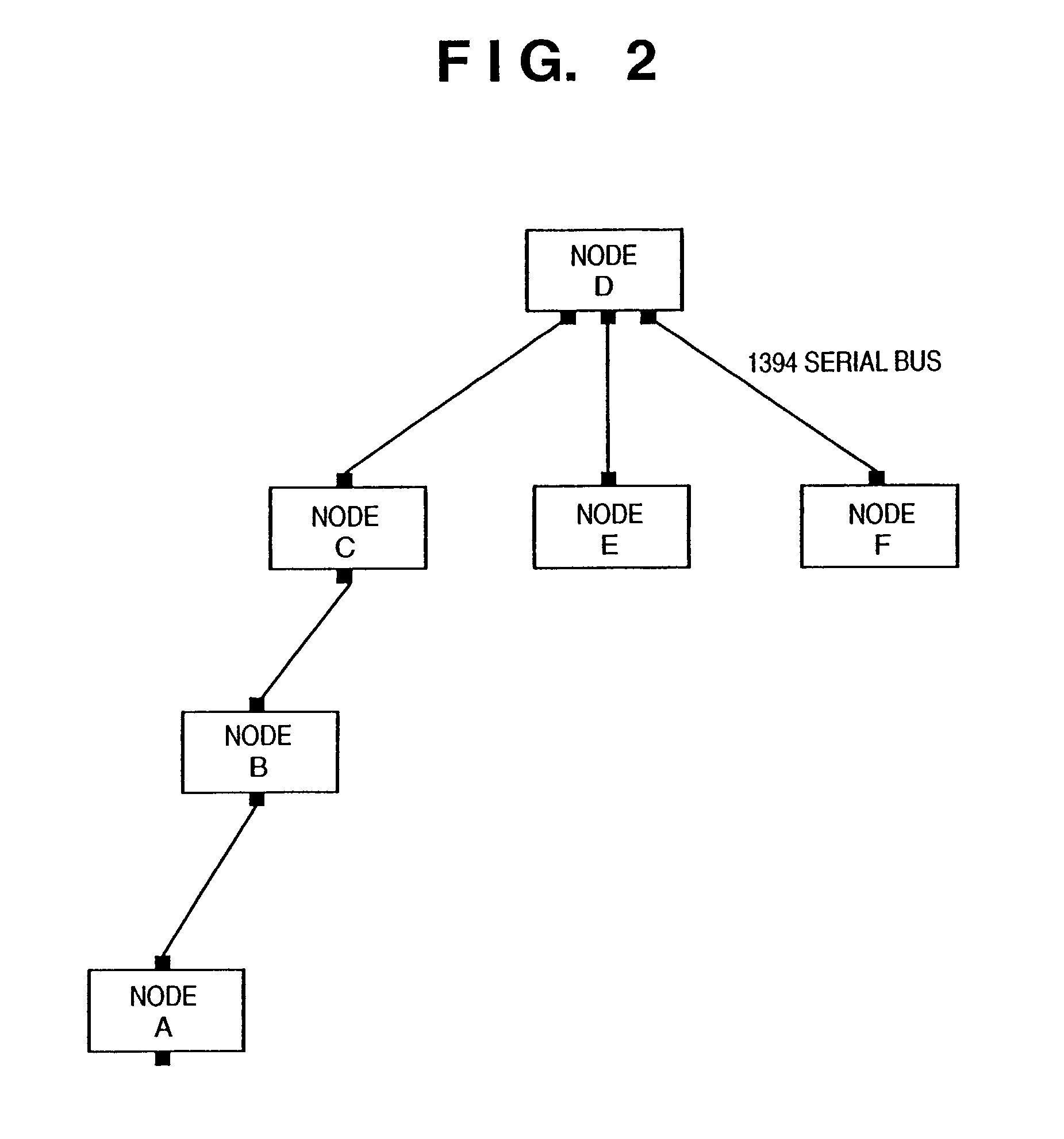Data processing apparatus and power control method
- Summary
- Abstract
- Description
- Claims
- Application Information
AI Technical Summary
Benefits of technology
Problems solved by technology
Method used
Image
Examples
first embodiment
[0050]A power saving control method according to the first embodiment of the present invention will be described in detail below with reference to the accompanying drawings.
[0051]FIG. 1 shows a general connection configuration of a system to which the present invention is applied. In FIG. 1, an ink-jet printer 102 as a print device, a storage device 103 used to save data, and a communication camera 104 as a device for always capturing an image are connected to a personal computer 101 via a serial interface.
[0052]In the system of this embodiment, since the serial interface that connects respective devices uses an IEEE1394 interface, an outline of the IEEE1394-1995 standard technology will be explained first. Note that details of the IEEE1394-1995 standard (to be referred to as the IEEE1394 standard hereinafter) are described in “IEEE Standard for a High Performance Serial Bus” published by IEEE (The Institute of Electrical and Electronics Engineers, Inc.) on Aug. 30, 1996.
[0053]
[0054...
second embodiment
[0220]In the first embodiment, consumption power can be perfectly cut by turning off the power supply circuit of the device by the power saving control. However, in order to resume the device, a power supply startup sequence starting from a power ON operation must be executed, resulting in a long startup time. That is, no problem is posed if a response to the LINK_ON packet sent on the serial bus can be sent back within an allowable time of a partner device. However, some device may start an error process when it cannot wait that response. If the response time is preferentially shortened, since a measure is taken using the sleep mode as the power saving control, consumption power increases in such case even in a standby state as long as ICs that make clock operations are present.
[0221]In the second embodiment, a suspend state (suspend mode) 3003 is added as power saving control, as shown in the status transition chart of FIG. 30. In the suspend mode 3003, all clocks to be supplied t...
third embodiment
[0224]As described above, the three states, i.e., the sleep, suspend, and shutdown modes as power saving modes have been individually explained. One device can selectively use these three power saving modes.
[0225]FIGS. 31 and 32 show a state wherein one device makes the transition to a power saving mode.
[0226]A TIME_OUT signal is generated after an elapse of a predetermined wait time from an active mode 3101 in which a normal operation is made, thus setting a sleep mode 3102. In this state, since a CPU operates slowly, it consumes electric power to some extent. After an elapse of a wait time T2, the device temporarily transits to the active mode 3101 to prepare for transition to a suspend mode 3103. The device then transits to the suspend mode 3103, in which clocks are halted, in response to a SUSPEND signal. Furthermore, after an elapse of a wait time T3, a power supply circuit is turned off in response to a SHUT_OFF signal, thus setting a shutdown mode 3104. The contents of the tr...
PUM
 Login to View More
Login to View More Abstract
Description
Claims
Application Information
 Login to View More
Login to View More - R&D
- Intellectual Property
- Life Sciences
- Materials
- Tech Scout
- Unparalleled Data Quality
- Higher Quality Content
- 60% Fewer Hallucinations
Browse by: Latest US Patents, China's latest patents, Technical Efficacy Thesaurus, Application Domain, Technology Topic, Popular Technical Reports.
© 2025 PatSnap. All rights reserved.Legal|Privacy policy|Modern Slavery Act Transparency Statement|Sitemap|About US| Contact US: help@patsnap.com



